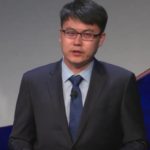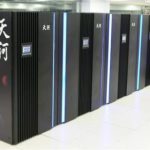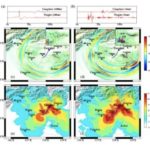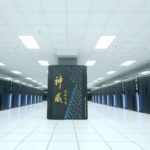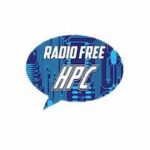The mystery shrouded in a riddle that is the state of exascale supercomputing in China is the main topic of this week’s @HPCpodcast episode. Setting off a re-focus on the recurring topic: the release of a research paper from PRC university scientists on the use of the Sunway TaihuLight system, the no. 4-ranked supercomputer on the Top500 list, in “quantum many-body problems,” which are problems of extreme complexity and scale.
@HPCpodcast: Exascale in China and a Philosophical Turn on Riding Advanced Tech to Super-wealth and Media Power
Exascale in China? 40 Million Cores Used for Many-Body Quantum Simulation
For several years, some in the HPC community have suspected China of sandbagging the world on its true supercomputing capabilities. Those suspicions may have been confirmed with the publication of a research paper last week in which Chinese university researchers reported that 40 million heterogeneous cores within China’s Sunway supercomputer have been directed at a […]
SC19 Invited Talk: HPC Solutions for Geoscience Application on the Sunway Supercomputer
Lin Gan from Tsinghua University gave this invited talk at SC19. “In recent years, many complex and challenging numerical problems, in areas such as climate modeling and earthquake simulation, have been efficiently resolved on Sunway TaihuLight, and have been successfully scaled to over 10 million cores with inspiringly good performance. To carefully deal with different issues such as computing efficiency, data locality, and data movement, novel optimizing techniques from different levels are proposed, including some specific ones that fit well with the unique architectural futures of the system and significantly improve the performance.”
Radio Free HPC Looks at China’s Exascale System Prototypes
In this podcast, the Radio Free HPC team looks at China’s new ARM-based Exascale supercomputer prototype. “The Sunway exascale computer prototype is very much like a concept car that can run on road,” said Yang Meihong, director of the National Supercomputing Center in Jinan. “We expect to build the exascale computer in the second half of 2020 or the first half of 2021.”
SDSC Earthquake Codes Used in 2017 Gordon Bell Prize Research
A Chinese team of researchers awarded this year’s prestigious Gordon Bell prize for simulating the devastating 1976 earthquake in Tangshan, China, used an open-source code developed by researchers at the San Diego Supercomputer Center (SDSC) at UC San Diego and San Diego State University (SDSU) with support from the Southern California Earthquake Center (SCEC). “We congratulate the researchers for their impressive innovations porting our earthquake software code, and in turn for advancing the overall state of seismic research that will have far-reaching benefits around the world,” said Yifeng Cui, director of SDSC’s High Performance Geocomputing Laboratory, who along with SDSU Geological Sciences Professor Kim Olsen, Professor Emeritus Steven Day and researcher Daniel Roten developed the AWP-ODC code.
Video: Scaling Climate and Weather Forecasting on Sunway TaihuLight
Haohuan Fu from Tsinghua University in China at the PASC17 conference in Lugano. “This talk reports efforts on refactoring and optimizing the climate and weather forecasting programs – CAM and WRF – on Sunway TaihuLight. To map the large code base to the millions of cores on the Sunway system, OpenACC-based refactoring was taken as the major approach, with source-to-source translator tools applied to exploit the most suitable parallelism for the CPE cluster and to fit the intermediate variable into the limited on-chip fast buffer.”
PASC17 to Feature Talk by Gordon Bell Prize Winner Haohuan Fu
“This talk reports efforts on refactoring and optimizing the climate and weather forecasting programs – CAM and WRF – on Sunway TaihuLight. To map the large code base to the millions of cores on the Sunway system, OpenACC-based refactoring was taken as the major approach, with source-to-source translator tools applied to exploit the most suitable parallelism for the CPE cluster and to fit the intermediate variable into the limited on-chip fast buffer.”
Asia’s First Supercomputing Magazine Launches from Singapore
Singapore-based publisher Asian Scientist has launched Supercomputing Asia, a new print title dedicated to tracking the latest developments in high performance computing across the region and making supercomputing accessible to the layman. “Aside from well-established supercomputing powerhouses like Japan and emerging new players like China, Asian countries like Singapore and South Korea have recognized the transformational power of supercomputers and invested accordingly. We hope that this new publication will provide a unique insight into the exciting developments in this region,” said Dr. Rebecca Tan, Managing Editor of Supercomputing Asia.
ASC17 Student Competitors to Gain Access to #1 Sunway TaihuLight Supercomputer
Today the Asia Supercomputer Community announced that the world’s fastest supercomputer, Sunway TaihuLight, will be used by students in the upcoming 2017 ASC Student Supercomputer Challenge. “The teams will design and build a cluster under 3000W to conduct a benchmark test, a mystery app, and other applications involving the latest technologies. Prizes and awards will be based on single applications and overall performances.”
Radio Free HPC Reviews the New TOP500
The new TOP500 list is out, and Rad is Free HPC is here podcasting the scoop in their own special way. With two new systems in the TOP10, there are many different perspectives to share. “The Cori supercomputer, a Cray XC40 system installed at Berkeley Lab’s National Energy Research Scientific Computing Center (NERSC), slipped into the number 5 slot with a Linpack rating of 14.0 petaflops. Right behind it at number 6 is the new Oakforest-PACS supercomputer, a Fujitsu PRIMERGY CX1640 M1 cluster, which recorded a Linpack mark of 13.6 petaflops.”



